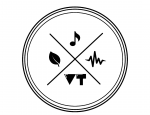Project description
Reforest'Action works in collaboration with the Regional Park of Reunion and the French Coastal Conservatory to protect and restore a degraded ecosystem: the dry forest. Indeed, native species of Reunion Island are disappearing invaded by invasive alien species.
Réunion project at a glance
- Number of trees to be plant : 80.000 to 100.000 until 2020
- Plantation areas : about 50 hectares
- Species to plant : Caterpillar Wood, Scented Wood, Blue Scented Wood, Oil Wood, Stinking Wood, Red White Wood, Mahot Rampart, Sandwood, Nettle Wood, Plum Wood, Tanguin pays, Milkwood ...
- Project type : restoration of a degraded ecosystem and protection of endemic trees and shrubs
Context
Reunionnese Dry Forest has almost disappeared from the planet. Formerly present on the entire West Coast of the Island, it now survives only as small relics, located in inaccessible areas.
These relics are located in the North of the Island on the Massif de La Montagne, not far from Grande Chaloupe village. This tropical forest of low altitude is governed by a singular climate: a long dry period that extends from April to November contrasting with a short rainy season. The vegetation of this ecosystem is adapted to these extreme variations.
Since the 1970s, naturalists and academics have pointed out the exceptional value of the Grande Chaloupe sector and its surroundings. Local authorities and services have made this site a priority. The Department of La Réunion has thus included it in its network of Sensitive Natural Areas. The French Coastal Conservatory has acquired 750 hectares in order to protect them sustainably.
All the plots of the project are thus located on public land. The site is partly in the heart of Reunion National Park. Its registration on UNESCO’s World Heritage, for the richness of its biodiversity and the beauty of its landscapes, is the recognition of the collective effort made by all nature lovers for half a century.










